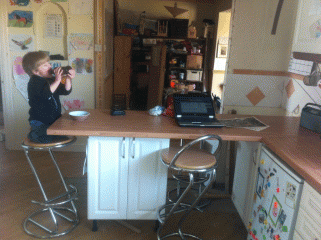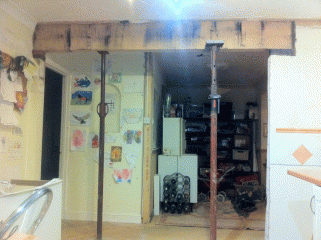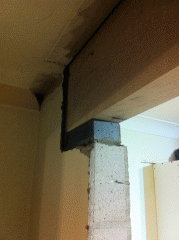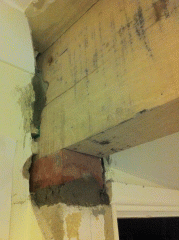Getting an opening: remove an internal wall!
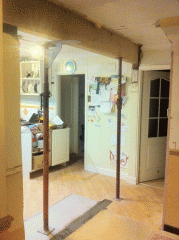
Knocking down an internal wall can be a great way to make your living space seem a lot larger. Making that decision needs to be taken only after a lot of thought and planning, however, as it is expensive to do and expensive if you change your mind!
In most cases, a downstairs internal wall constructed from masonry will be supporting something above it - either upstairs floorboards or an upstairs wall. You really should call on the services of a professional architect to discuss your ideas and to calculate the lintel size required (if any). This shouldn't be as expensive as it sounds though; we paid a local architect £50 in 2008 for two sets of calculations (for wood and for steel lintels).
Don't forget to apply for building control approval from your local council (usually the district council). Approval can be granted retrospectively, and this is called regularisation, but it is safer to get your plans approved first and to have the modification inspected during construction.
We had the choice of a 175mm steel I-beam or a 300mm oak beam for our 2.9m opening. We weren't bothered by the extra depth caused by an oak beam, and were pleasantly surprised when our chosen builder told us that it was going to be almost £300 cheaper if we went for the wood option. The oak beam was cheaper than the steel option, and it didn't require any fiddly plaster-boarding work. When you have your architect around, ask for a wood option too!
Here are a couple of time-lapse recordings of the work:
